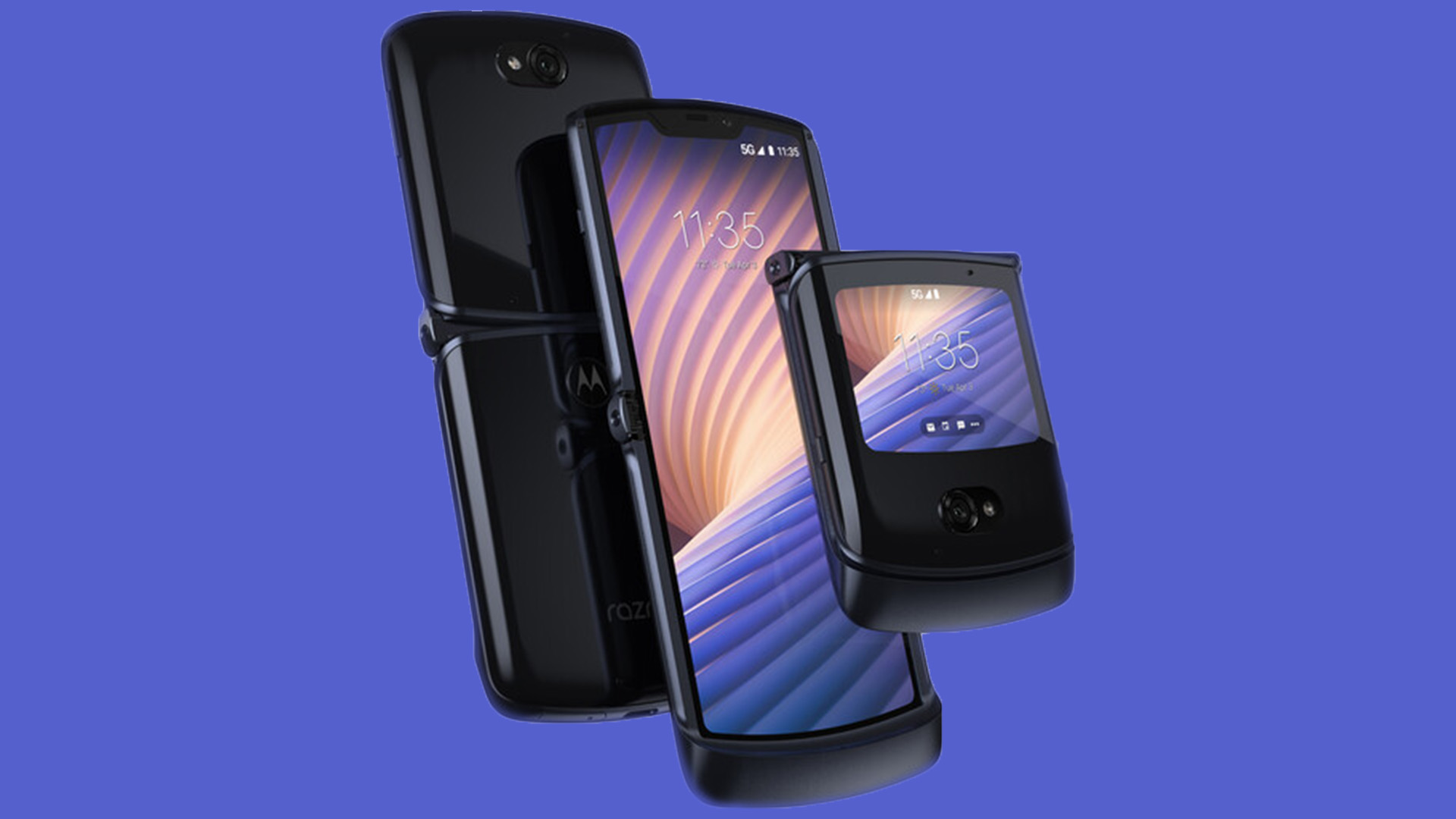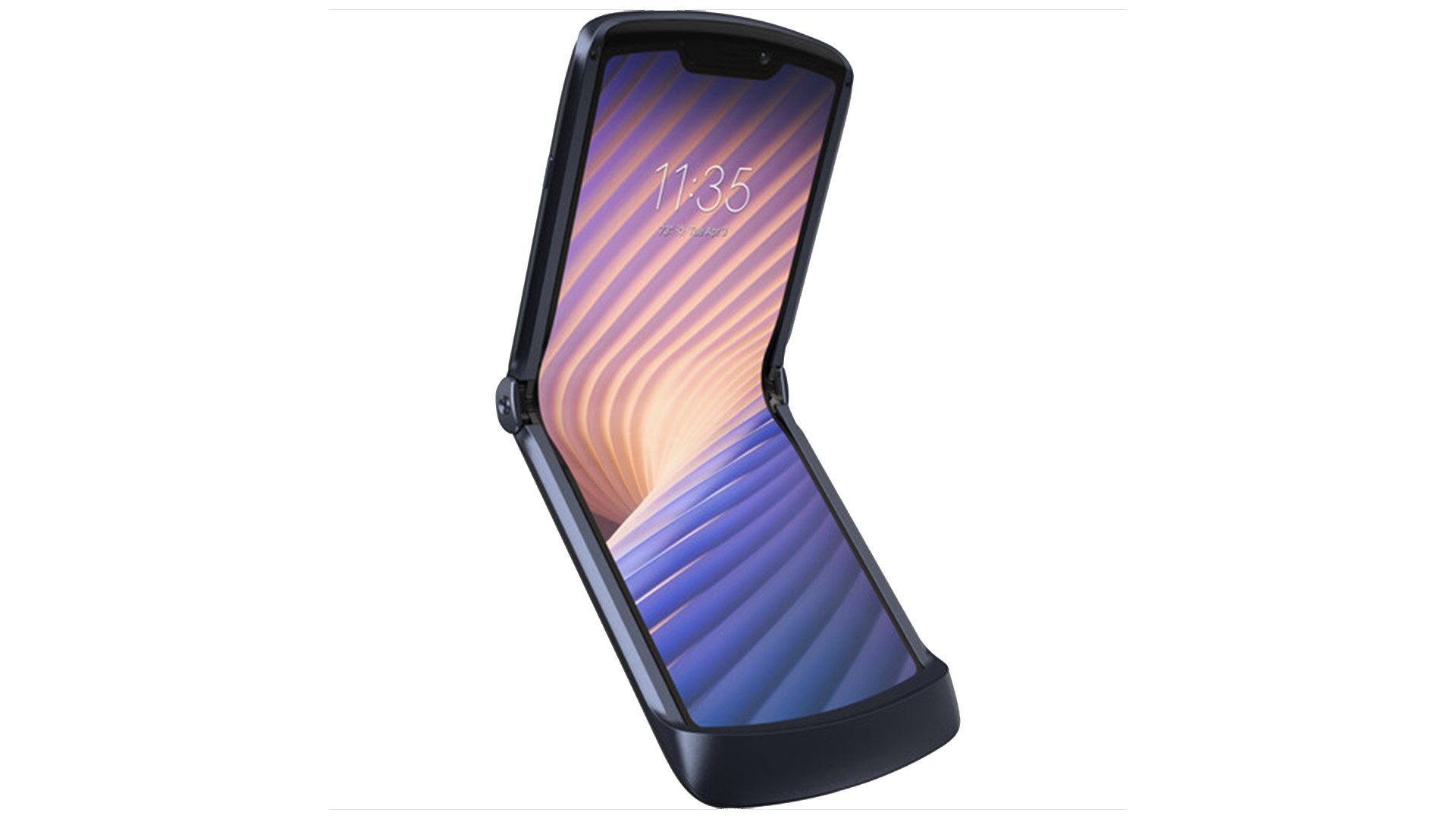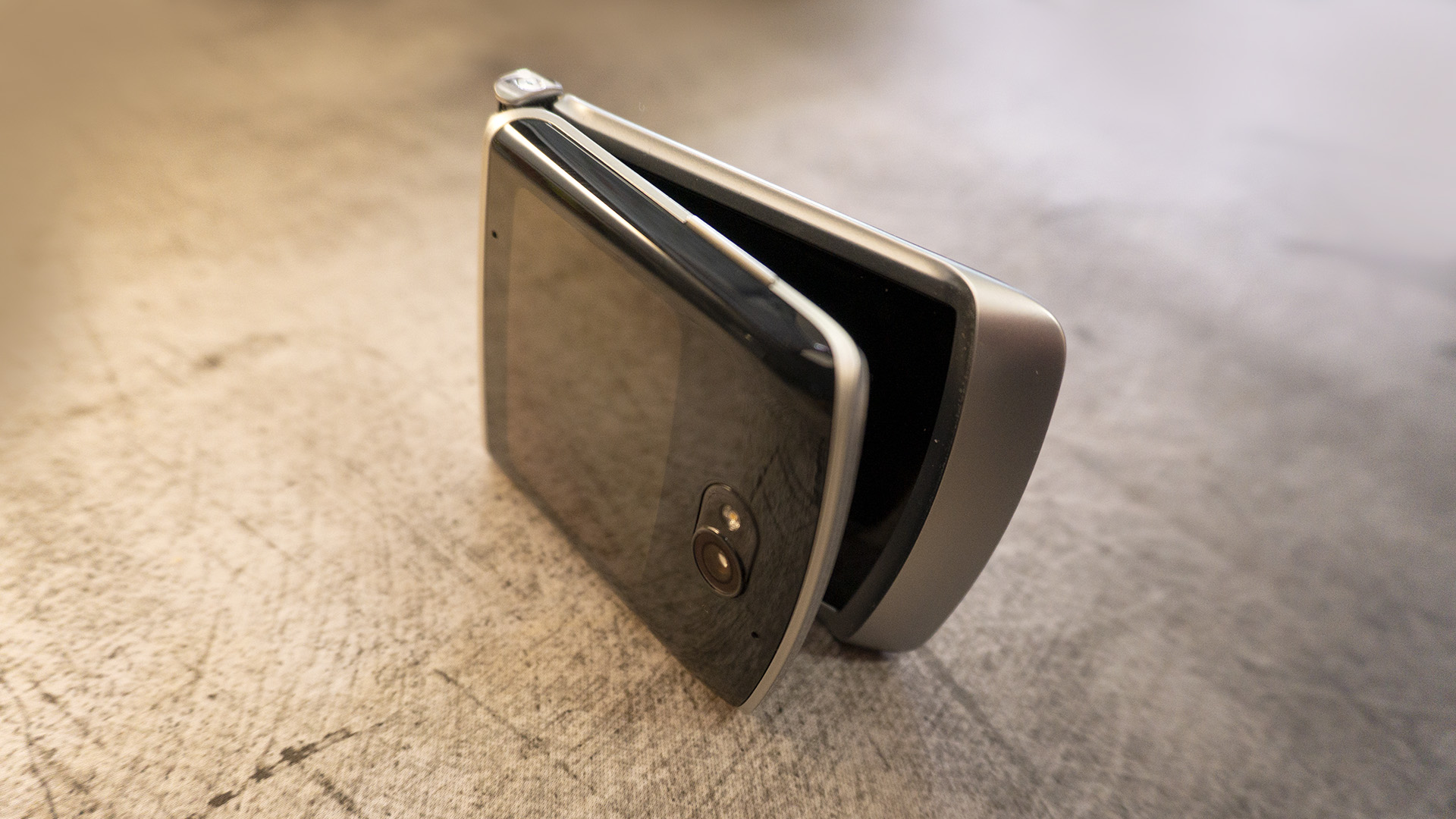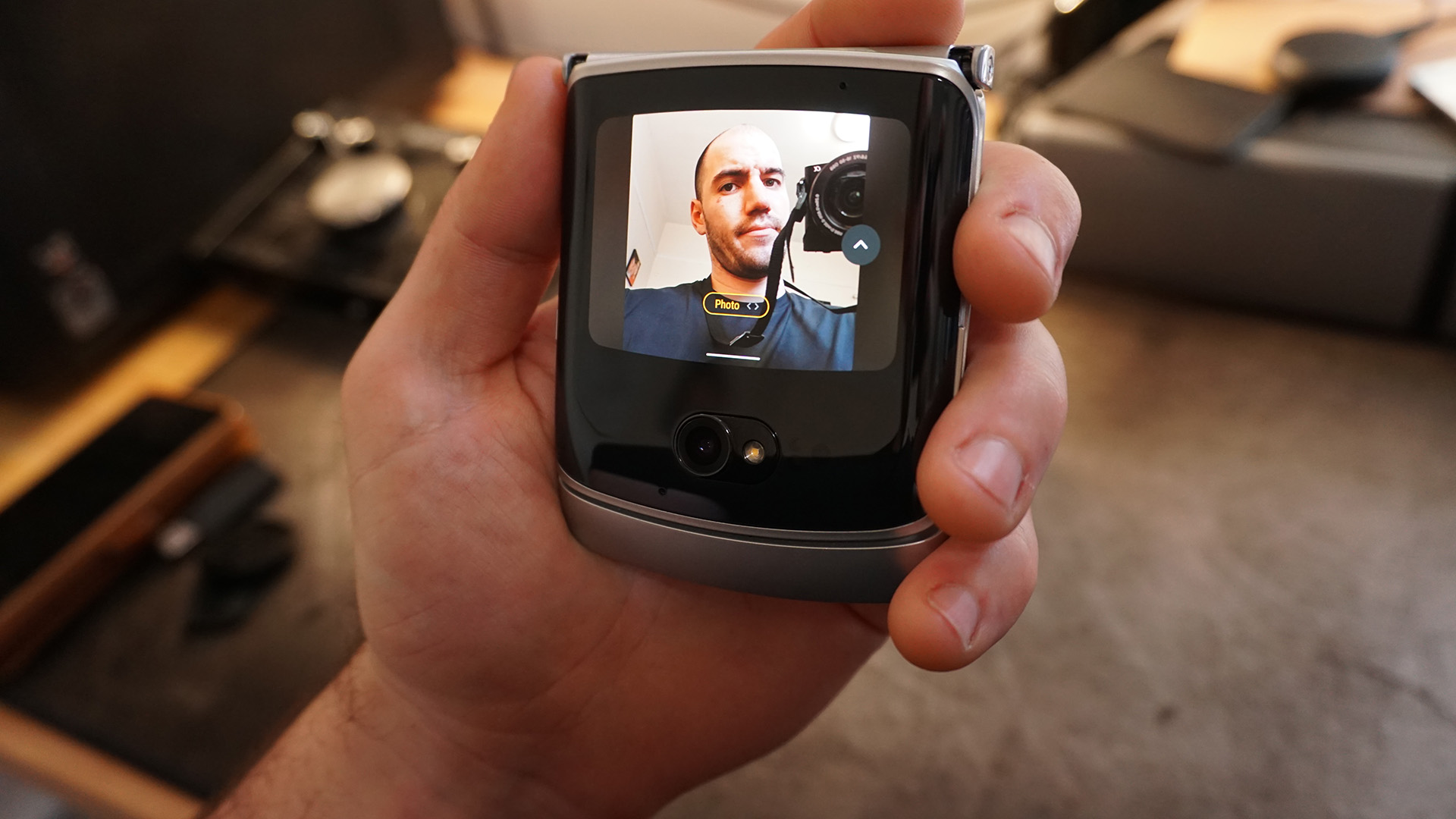Motorola Razr 5G review: a great flip phone with a classic design
The Motorola Razr 5G once again revives its classic flip design with sharp looks and decent utility


The Motorola Razr 5G is the phone to get if you want one thing: a cool, foldable phone. It’s not nearly as versatile as other phones in its price bracket, but it’s perfectly capable of everyday use and does it with flair.
-
+
Pocket friendly
-
+
Some serious cool factor
-
+
Solid everyday performance
-
+
Easiest main-camera selfies ever
-
-
Limited battery life
-
-
Basic cameras
-
-
Durability trade-offs
Why you can trust T3

Motorola Razr 5G review – Specs

Main screen: HD+ (2,142 x 876) 6.2-inch OLED
Secondary screen: SD (800 x 600) 2.7-inch OLED
CPU: Qualcomm Snapdragon 765G
GPU: Adreno 620
RAM: 8GB
Storage: 256GB
Battery: 2,800mAh
Rear camera: 48MP
Front camera: 20MP
OS: Android 10
The Motorola Razr 5G was launched hot on the heels of the first of the reimagined Motorola Razr in September 2020. Just seven months after its predecessor's launch in February.
The upgrade makes a lot of sense, though. The first of the neo Razr’s came with a high price while offering a Snapdragon 710 chipset that would not only pale in comparison to the performance of the Snapdragon 865-based flagship phones launching in 2020 but also lack the 5G capabilities readily found on many of those phones.
The Razr 5G steps things up considerably with a Snapdragon 765G that’s well suited for all that the phone is meant to do. It’s a speedy phone for most daily activities, and 5G support will help it stay relevant in the evolving network infrastructure of the coming years.
Of course, the star of the show is the phone’s hinged design and flexible OLED display. Motorola did an impressive job building a phone that harkens back to the original Razr flip phone while coming with premium materials. Even though the display has some lumps and is plastic, it actually doesn’t feel like it falls too short of the best smartphones, especially since its bright visuals render those lumps all but invisible. And, that 6.2-inch display packs up into dimensions that take up way less space in your pocket than a typical smartphone.
This won’t be the smartphone for everyone. It lacks a lot of the versatility of its competition, and a lot of the price tag is just accounting for the foldability. But, for those who just need a general-purpose phone and have the money to make it the coolest one, the Razr 5G is one of the best folding phones out there.
Motorola Razr 5G review: Price, release date and what's in the box
The Motorola Razr 5G launched in September 2020 and carried a retail price of $1,399 / £1,399, which indicates plainly that it’s a premium device and that the unique foldable form factor isn’t one that comes cheaply. That said, Motorola has already begun to reduce the price, bringing it to a slightly more digestible $1,199 / £1,199.
For the price, the Motorola Razr 5G includes an 18W USB-A fast charger, a USB A-to-C cable, and a USB-C-to-3.5mm adapter for headphones. The Razr 5G comes in rather curious packaging that isn’t just cardboard for the recycling bin. Instead, it comes packed on a display stand (unfortunately not a charging type) that can hold your Razr and even give it an audio boost through some sound porting at the bottom. All of the USB accessories come in a small case that can slot into the back of the stand.
Get all the latest news, reviews, deals and buying guides on gorgeous tech, home and active products from the T3 experts

Motorola Razr 5G review: design and screen
The Motorola Razr 5G’s whole premise is centered around its design and screen. They are the stars of the show. Foldable displays have been bandied about at CES and other electronics trade shows for years, but now we’re seeing them come to mass consumer devices (even if they’re in somewhat of a smaller niche).
The Razr 5G is a showcase of the foldable display technology and a resurfacing of the nostalgic and iconic flip-phone design. At first glance, the Razr 5G hints at its roots rather loudly.
Motorola went for a premium build wherever it could and managed a largely consistent design. The frame is built from 7000 series aluminum while the hinge is built from tougher stainless steel that stays consistent with the color scheme. Meanwhile, the back and front of the phone are covered in Gorilla Glass 5. Motorola offers three color variants, and the majority of the phone will stick to the selected color, but all three options have a black front panel that does detract somewhat from the uniform style, at least for the Liquid Mercury (gray) option.
The front of the phone houses a small display, the primary camera and flash, as well as the power and volume buttons on its side. The back portion of the phone holds a fingerprint sensor near the hinge and the USB-C port, SIM slot, and loudspeaker at its bottom edge. Once the phone is folded open, the front and back of the phone both become the back of the phone (confusing, we know), and the flexible OLED display becomes the new front.
The front of the open phone has a unique shape. There’s a large chin below the display, just like on the original Razr from years past, and the display itself has a curved top and bottom with a small notch cutout at the top for the phone’s earpiece and selfie camera. The aluminum frame of the phone comes up to the sides of the screen, slightly raised above it to create a small gap while the phone is closed.
Half the fun of a flip phone is flipping it, and we can report the flipping is about half as fun as we’d hoped. The Razr 5G seems to be built so that its display gets gentler treatment than old school flip phones, so it doesn’t snap open and shut with quite the same panache (i.e., it’s a bit quiet). That said, it can still be flipped open with the same old wrist flick, and it will click shut.

Taken in as a whole, the Razr 5G shows a careful and well-conceived design. But, up close, a few spots don’t suggest the level of precision we’d expect of such a premium device. For instance, the seams around the back glass panel and SIM slot are uneven, which is a bit worrying for a device with a water-repellant design and no IP rating. The hinge could also stand to hold the phone in its fully open position with a bit more force, especially as Moto Actions see the top of the phone flop about while open. The placement of the volume and power buttons, as well as the fingerprint scanner, also make them difficult to use.
The ability to fold in half does make this one of the most pocketable phones on the market. While the Razr 5G measures 6.67 x 2.86 x 0.31in (169.2 x 72.6 x 7.9mm) unfolded, giving it a larger footprint than the Galaxy S21, it folds up to measure just 3.61 x 2.86 x 0.63in (91.7 x 72.6 x 16mm). That may be a little on the thick side, but it’s still mostly compact. In fact, it’s not too dissimilar to the classic Razer V3, which measured just 3.86 x 2.09 x 0.55in (98 x 53 x 13.9mm) closed.
There are two displays to discuss on the Razr 5G. The external display is a 4:3 OLED panel with an 800x600 resolution. At 2.7 inches, it’s not going to do a lot, but it has enough space to show notifications and open quick settings or work as a camera viewfinder for selfies with the main camera. In a way, it offers some of the convenience of a smartwatch. This little display actually does a nice job blending in with the black frame around it, perhaps excusing Motorola’s choice to break from the rest of the device’s color scheme.
The main display is where things get really interesting. This is a 6.2-inch OLED display with an HD+ resolution and 21:9 aspect ratio. In order to be foldable, the display couldn’t be made out of glass. So, it’s actually a plastic display. That may be a concern for long-term durability, but we haven’t noticed any issues in our time with the phone.
The screen feels little different than using any other smartphone with a decent plastic screen protector on it. However, there are some minor bumps on the display around the hinge area. They are visible when there’s a glare on them and they’re easy to feel while swiping up and down on the display. We thought these might be a distraction, but they actually proved easy to overlook even while watching dark HDR content that really takes advantage of the OLED display. It really doesn’t feel like there were too many tradeoffs to make this display flexible besides the lack of glass. The display also gets bright enough for use outdoors on sunny days. Just don’t plan on using dark themes, as they’ll be more prone to distracting glare on the screen's bumps.

Motorola Razr 5G review: hardware and performance
The Motorola Razr 5G may not have the same specs as its flagship competitors, but it actually doesn’t skimp on much. Inside, it’s packing the Snapdragon 765G chipset and 8GB of RAM for capable performance and Sub-6 5G support. The phone is perfectly snappy in our everyday use, and our benchmarks of the device actually line up neatly with those we got from another Snapdragon 765G powered phone. With a single-core score of 606 and a multi-core score of 1872 in Geekbench 5, the Razr 5G actually just slightly edges out the OnePlus Nord.
Launching apps, switching between them, pulling up videos, and rotating the display all go without a hitch. The one negative is that we can feel the phone warming up a bit when it’s working hard. This was most noticeable while running our benchmarks, and thankfully isn’t something that’s happened in general use.
At its price, it may feel a little disappointing not to see a higher-end chipset in the phone, but the truth is that the Snapdragon 765G is likely the better fit for this phone. It wouldn’t take much advantage of all the capabilities of the Snapdragon 865 chipset given it only has one rear camera, doesn’t have the highest resolution display or an increased refresh rate, and really isn’t the phone you’d want for gaming, especially since the speakers are so easy to obstruct and somewhat grating at higher volumes.
Motorola thoughtfully included 256GB of storage for this phone. This certainly helps for a phone at this price point, letting some of the other trade-offs sting a little less. If it had less storage, it would also sting more to find that the SIM slot doesn’t include a microSD card tray.

Motorola Razr 5G review: camera, OS and battery
The Motorola Razr 5G isn’t out to win any awards for its camera or battery life, and Motorola has a solid history of releasing phones with operating systems that stay very close to stock Android.
The Razr 5G features a 48MP primary camera that uses quad-pixel binning technology to produce a 12MP image. This camera serves its purpose admirably, but it pales in comparison to the many shooting experiences on phones that cost considerably less, like the Galaxy S21 or iPhone 12.
In everyday scenarios, it can capture fairly sharp detail, though shots get softer quickly if the light levels diminish. It can also achieve some nice, natural blur while taking close-up shots. It generally provides lifelike colors. We have noticed it occasionally gets the white balance off a bit, and it applies aggressive saturation when it detects food. The image stabilization is also on the weaker side, making it a little too easy to end up with a blurry shot if we’re not careful. Even the HDR could use a slight boost, as we’ve gotten large over-exposed areas in shots that other phones likely would have handled just fine. The lack of zoom or wide-angle sensors also limits the flexibility of this camera system.
The front-facing camera is a 20MP number that uses quad-pixel binning as well. This sensor doesn’t serve much purpose beyond video call though, and it serves that purpose just fine. This is because the front-display makes it incredibly easy to take selfies or record video of yourself using the main camera.

The 48MP camera does a decent job, overall

Even in HDR mode, highlights are still lost

Food shots can appear a little saturated

It's easy to take a selfie using the main camera thanks to the front screen
Motorola’s tweaks to Android 10 are all welcome and not overly complex. It has made the external display a useful tool that doesn’t just act like a tiny home screen, and the OS is effective at switching from the external display to the main internal one. Motorola isn’t responsible for much bloat either beyond its Moto Actions, which provide handy shortcuts to the camera, flashlight, and more. However, the model we reviewed came from AT&T, which had installed a considerable amount of extraneous apps.
The battery may be the Razr 5G’s biggest shortcoming, as it’s a fairly diminutive 2,800mAh. We actually haven’t had trouble making it last the whole day, but we aren’t spending a lot of time on the go depending on a phone for everything. Since the phone also looks worse with dark themes, we can’t enjoy the battery savings they provide on OLED devices. That said, the small front display offers a battery-saving opportunity as it is handy for peeking at notifications, checking the time, and snapping a quick selfie without needing to light up the larger display.
Motorola Razr 5G review: verdict
The Motorola Razr 5G holds up. It’s no heavyweight offering the highest-end internals or the most versatile features, but it earns its place by daring to be different – very different. It’s truly impressive how well Motorola has implemented a flexible display that actually feels close to the displays in its competitors. The phone has a high price for cool factor, as its cameras, chipset, and battery life certainly doesn’t justify the high price. But, for those who want a phone that’ll turn heads, there are few options like this. Samsung’s Galaxy Z Flip offers the most serious competition, offering an experience that lines up more closely with other flagship phones, but it lacks the iconic design and could benefit from the external display the Razr 5G makes clever use of.

Mark Knapp has covered tech for most of the past decade, keeping readers up to speed on the latest developments and going hands-on with everything from phones and computers to e-bikes and drones to separate the marketing from the reality. Catch him on Twitter at @Techn0Mark or on T3, PCMag, IGN, TechRadar, Business Insider, and Reviewed.